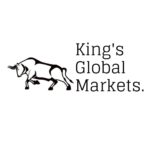 By Christie Emin, Analyst at King’s Global Markets
By Christie Emin, Analyst at King’s Global Markets
When looking to diversify your investments, look no further than alternative investing. In fact, there are two types of investing: traditional and alternative investing. Traditional investing concerns with putting funds into stocks and bonds and being directly open to the volatile price fluctuations of the stock market. However, if one is looking for something more stable and less correlated to the equities market, alternative investments may be the way.
Now, what are alternative investments? In its nature, there are 4 types of alternative investments, which can be segregated into financial instruments, real/physical assets, and collectables. However, in recent years concepts such as cryptocurrencies and non-fungible tokens (NFTs) too came to be a significant part of alternative investments.
Financial instruments might include hedge funds, private equity and some distressed funds. Real assets include commodities, precious metals, real estate, while collectables consist of art and antiques, watches, classic cars, and wine.
 Fine wine is a passion/liquid asset and on average has a predictable useful life of less than 50 years. After its complete production including two fermentations and a resting period of 12-18 months, fine wine should be held for a minimum of 5 years to 10 years to optimize its returns and allow the wine to become complicated. However, once its peak has reached, fine wine’s both financial value and quality deteriorate.
Fine wine is a passion/liquid asset and on average has a predictable useful life of less than 50 years. After its complete production including two fermentations and a resting period of 12-18 months, fine wine should be held for a minimum of 5 years to 10 years to optimize its returns and allow the wine to become complicated. However, once its peak has reached, fine wine’s both financial value and quality deteriorate.
There are many producers of wine all over the world, but France is its biggest producer. 60% of fine wine originates from Bordeaux, 20% from Burgundy, 10% from the USA, 5% from Italy, 2% from the Champagne region, 1% from Rhone and 2% from the rest of the world.
Classified as a wasting asset by the HMRC, fine wine is a Capital Gain Tax-free asset and is notorious for outperforming the FTSE100 and Dow Jones. In 2015, fine wine managed to outperform gold, copper, FTSE100 and the S&P 500, making it the most profitable investment of the year. Of all alternative investment variations mentioned, fine wine possesses a track of the lowest correlation to equity markets. The supply of the fine wine market is not at all impacted by changes in government policies, it shrinks on the basis of its consumption. Hence, the shortage of fine wine is almost imminent. It is the demand for a finite asset that essentially drives up the prices. Moreover, a rapid population increase in the middle class of emerging economies such as China and India too affected the price of wine as fine wine investment is viewed as a symbol of wealth, indulgence and luxurious life.
However, one of its disadvantages is the fact that the fine wine market is unregulated and not protected by the Financial Conduct Authority (FCA). Some say it is because of the size of the market which amounts to £3.2 billion, compared to the gold market of £14.2 billion traded on a daily basis. Furthermore, if one is looking for an option to liquidate one’s assets, fine wine may not be the optimal choice as on average it can take 4-12 weeks to liquidate a sizable wine portfolio. It is, however, the most liquid of all passion assets. Equally, just as other passion assets, fine wine is a very complicated asset to be valued without being subjective and quite often the final price is not determined until the point of sale.
In a similar manner as when one invests in stocks and diversifies its portfolio to hedge one’s position, a fine wine investor should diversify his/her wine portfolio. It is of crucial importance to include wines from different regions and of different vintages (year of grape harvesting) for optimal risk management. No year is perfect for wine harvesting, especially now with global warming, hails during the winter and hot summers can destroy the harvest completely. A poor harvest is a strong factor for driving up the wine price. How does one diversify one’s wine portfolio? In order to answer this question, it is crucial to understand different types of wine.
There are 5 varieties of wine in nature: white wine, red wine, *rose wine, dessert/sweet wine and **sparkling wine. Wines are generally classified on the basis of their quality into 3 categories, which are Grand Cru, Premier Cru and Village. Grand Cru is considered to be the crème de la crème, the pinnacle of the fine wine pyramid. Premier Cru is made from superior vineyards and Village from ordinary villages. Having a couple of each quality classification is a good start.
*Rose wine is made by adding red wine to the existing white wine base.
**Sparkling wine is essentially a still white wine made from red grapes. Although, when producing still wine, winemakers will allow the CO2 to escape before the wine is finally bottled. For sparkling wines, however, carbon dioxide is never allowed to escape. Therefore, it dissolves into the wine, and the wine is bottled sparkling.
Wine can be purchased through fine wine auctions or via merchants/brokers. Most wine auctions prefer to sell wine in sets of 3, 6, 12 and 13. The sets of 13 are sold in case a collector wants to try a bottle. Most wine exchanges require sets. The most famous wine exchange is the London International Vintners Exchange or Liv-ex. It is the global marketplace for wine trading. The minimum fine wine investment amount is $10,000.
Others, however, suggest investing in stocks of the wine company such as LVMH which owns houses such as Dom Pérignon, Moet & Chandon, Hennessy, Veuve Clicquot and alike. However, it should be noted that in this very case your investment is no longer considered alternative. Now it transforms into a purely financial instrument and is directly impacted by the stock market volatility and not linked to any underlying physical asset.
My readers might think that information in this article cannot be applied to practice for now, since fine wine investment is for the posh and wealthy. Well, allow me to introduce you to a more real and down-to-earth option – Vinovest!
Founded in 2019, Vinovest is an online platform for wine investing with a minimum investment fee of $1,000. When investing with Vinovest, one does not own a physical bottle ready for consumption. Vinovest buys or sells actual bottles on behalf of the client and stores them in climate-controlled areas. Thanks to machine-learning technology, Vinovest provides its clients with the detailed financial performance of the wine and the remarks of sommeliers. It is less about wine collecting and more focused on wine investing where the significance of high returns outweigh the taste. Equally, investing with Vinovest is better than via auction houses as traditional auction houses do not guide their clients and quite often clients need to rely on their personal knowledge.
So, if any of my readers are passionate about wine or simply alternative assets, no need to worry about high barriers to entry. The wine industry is now as open as ever thanks to rapid developments in technology.
Exclusive Offer: Get £100 off your Summer Internship Experience at Amplify Trading by clicking here or using our unique discount code at the checkout: MSAmplifySummer2021. Participants graduate from the course with a Diploma from the London Institute of Banking & Finance. For more information about the course, click here.

King's Global Markets - KGM
King’s Global Markets is a community of students dedicated to the advanced study and application of global financial markets, economics and global business.
Hi there, just became aware of your weblog through Google, and found that it’s really informative. I’m going to be careful for brussels. I’ll be grateful in case you proceed this in future. Numerous other folks might be benefited from your writing. Cheers!